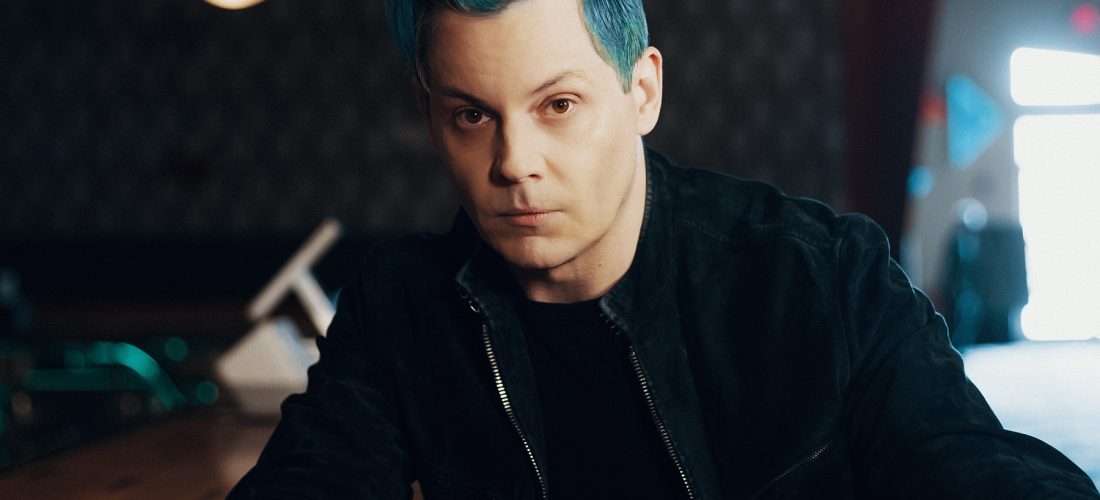Jack White’s ‘Fear of the Dawn’ is a Bizarre, Euphoric Experiment
“When you cut into the present, the future leaks out,” declares a craggy voiced sample of late Beat novelist William S. Burroughs near the middle of Jack White’s avant-rock tune “Into the Twilight.” In the Fifties, the Naked Lunch author popularized an radical style of writing he dubbed “the cut-up technique,” which involved typing out his thoughts, vivisecting the sheet of paper, and then rearranging the composition into something new, hoping the words made new sense in a new order. That spirit seems to be what modern-art enthusiast Jack White (remember De Stijl?) was chasing on Fear of the Dawn, the sometimes euphoric, sometimes bizarre solo album he made during the quarantine years.
“Into the Twilight” begins with jazzy “ba-da-da” vocal scatting (courtesy of a Manhattan Transfer sample), then interpolates trip-hoppy drumming, samples of voices sped up to helium pitches that sound like ear candy from early Nineties Prince albums, and buzzsaw guitar divebombs. But, like Burroughs’ writing, it still makes some sense. White still plays icky-thumping blues riffs, and his head voice still sounds like Robert Plant howling to Valhalla even if the lyrics don’t say much (“Here in the night, everything’s right” is about as revealing as it gets.) It’s essentially a rock-soul-jazz-poetry collage, and if you were to distill it down to its individual elements, each part may sound enjoyable — but as a nearly five-minute song, it’s still a freight train of confusion. That’s because the problem with experimental art is that sometimes experiments fail.
Unfortunately, Fear of the Dawn — the first of two records White will release this year — feels like a hodgepodge of good intentions and so-so execution. The best songs here are the ones where White listens to his instincts and doesn’t let his concepts get in the way of a great hook. “That Was Then (This Is Now)” fuses the manic blues explosions of White Stripes with his ambitious jazz tangents without losing the plot; “Taking Me Back,” a straight-head rocker White recorded entirely by himself, sounds focused and hummable even if the guitar tone is a little overcooked; and “Eosophobia (Reprise)” features some of White’s most inspired guitar wah-wahing to date but still suffers from lyrics like “At night there is no light, I’m not wrong” (which reads as though it were written via planchette).
But it all comes undone when allows his ambitions to become metaphysical. His wanted to update Cab Calloway’s joyful scatting on “Hi-De-Ho” with a tiptoeing, modern-dance melody and some hi-de-ho’ing hip-hop verses by A Tribe Called Quest’s Q-Tip, but it ended up sounding more like late-Nineties Big Band revival pop. And the initial “Eosophobia” (an ancient Greek cognate meaning “fear of the dawn”) is a Dr. Moreau-like hybrid of dub reggae and Jimmy Page riffing that doesn’t quite translate into “Dyer Maker.” White built “What’s the Trick?” using samples of propulsive guitar riffs, but it sounds unnatural and kind of off-putting due to his penchant for Captain Beefheart–style blurting and dance-y drum samples.
The pop-song collages are sometimes jarring and sometimes recall the late Nineties when every rock band attempted to write songs with trip-hop beats (some for the better, like Garbage’s first two albums, some for the worse, like Sting’s “Desert Rose.”) White just has to hope that listeners have the same attention span (and patience) that he has. And if they don’t, he’s releasing another new album, Entering Heaven Alive, two months later that might be more traditional; the only track he’s released from that so far, “Love Is Selfish,” is a pretty, standard-sounding acoustic tune suggesting the rest of the album might serve as a chaser for the rough experiments on Fear of the Dawn. The problem with cutting into the present and expecting the future is that the future isn’t always what you’ve hoped for.
